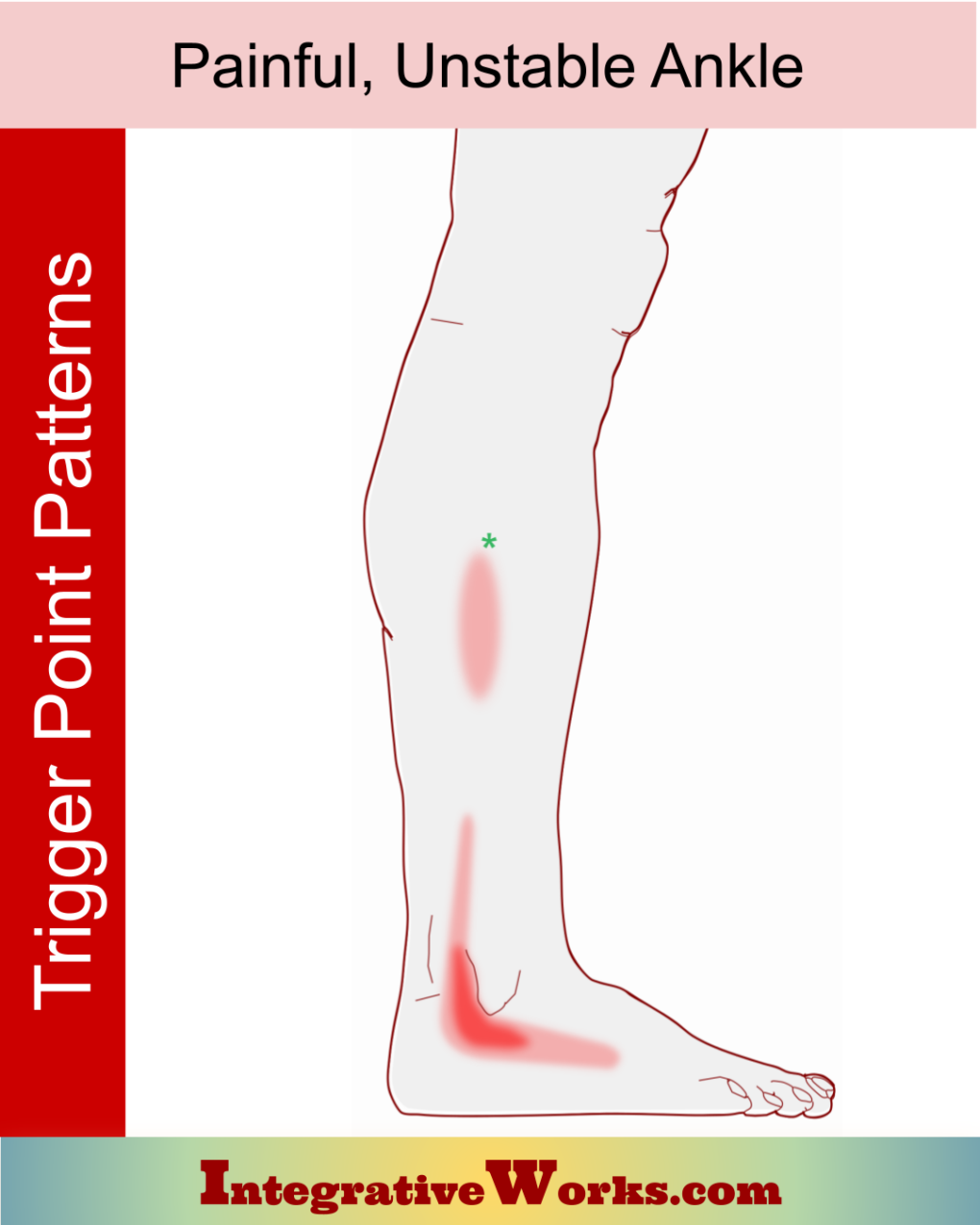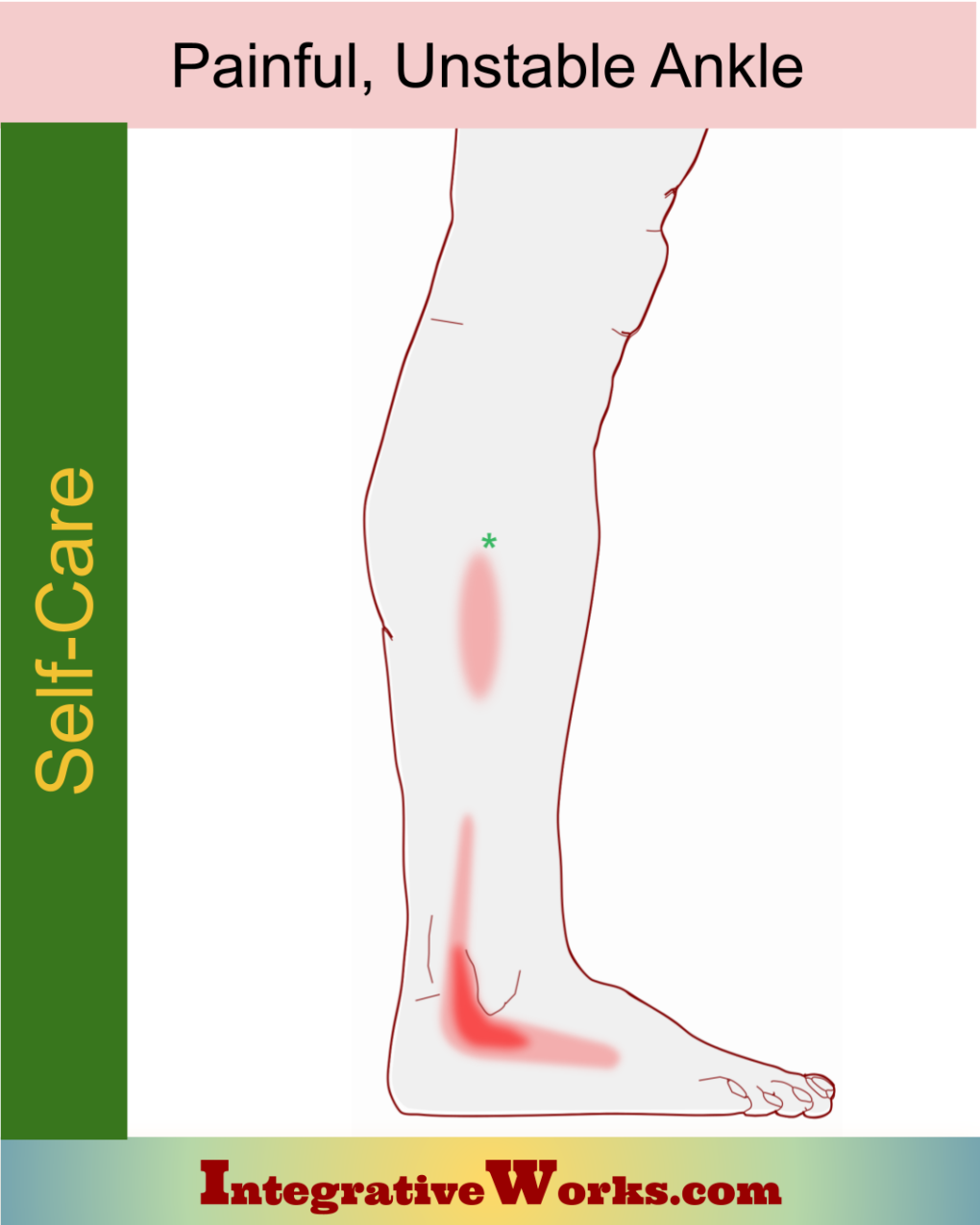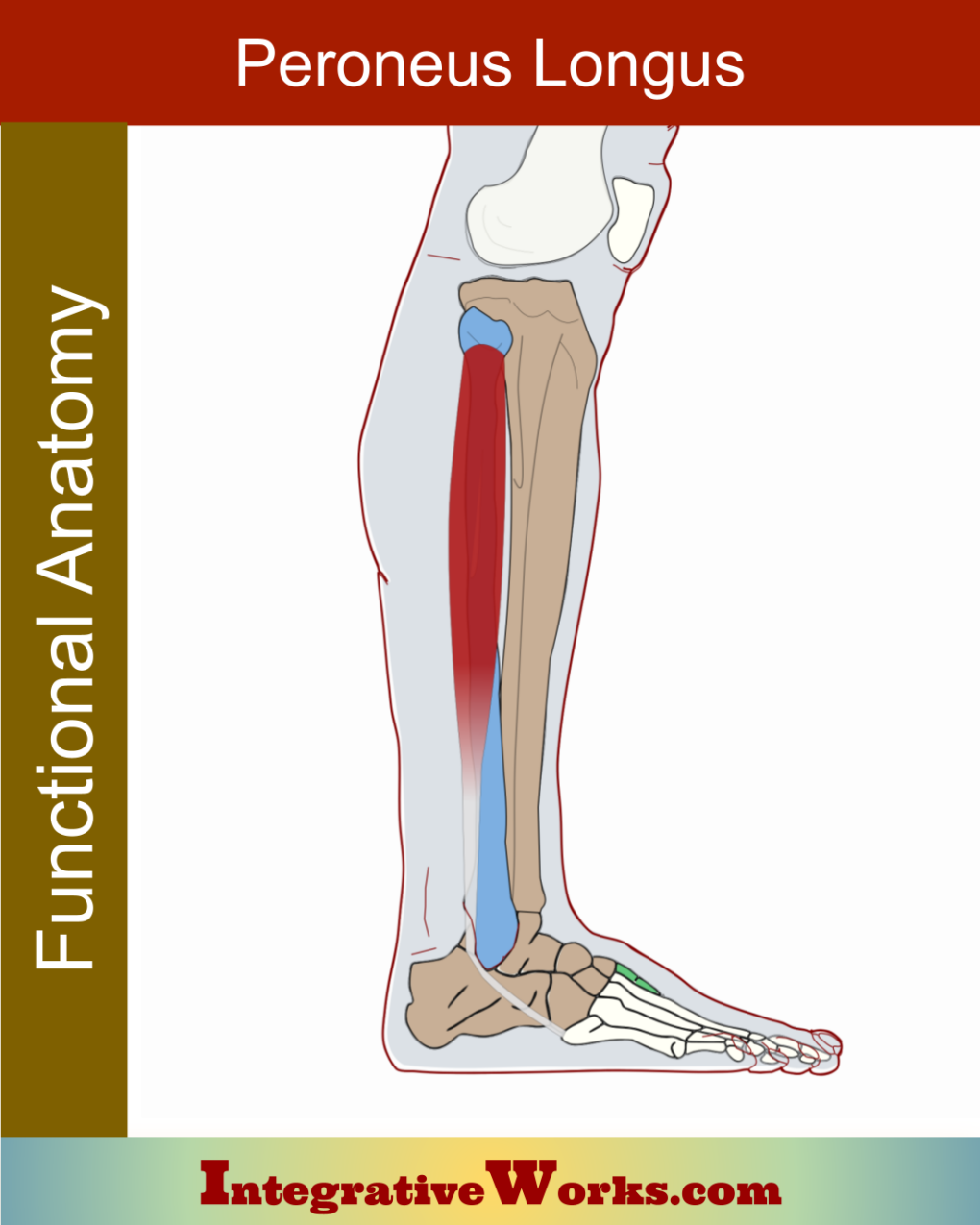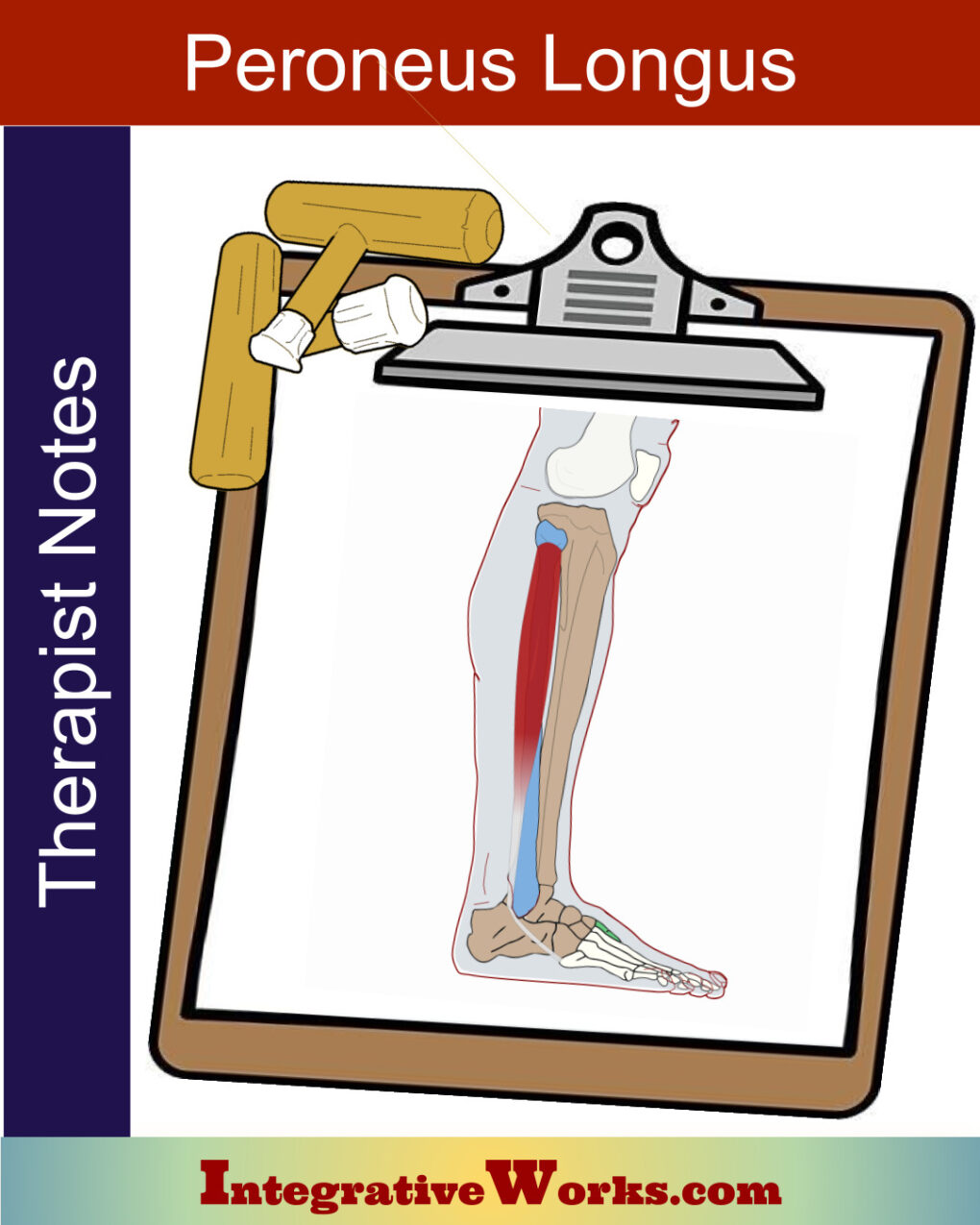Table of Contents
- How People Describe This Pain Pattern
- How You Activate and Intensify This Pain Pattern
- Self-Care – Getting Relief on Your Own
- Musculoskeletal Anatomy Behind Your Pain
- Therapy Notes for Massage and Bodywork
How People Describe This Pain Pattern

People often complain that they have twisted their ankle and wonder if it is sprained. It is painful and unstable. They associate it with stepping off a curb where the ball of the foot hits the curb, and the outside edge of the foot twists down. Others come in complaining that the ankle feels weak and painful. When asked about the pain, they usually trace around the back of their ankle.
An Actual Sprain
When there is an actual strain/sprain, there is usually swelling and some blood pooling along the edge of the foot. It looks like a weird bruise along the outside edge of the foot. There is often a bruise just above the ankle as well. Google “twisted ankle bruise,” and you’ll see that many people want to put a pic of this on the web, and they all look pretty similar. Your neuromuscular therapist will refer you to appropriate medical help if they suspect a sprained ankle.
When in doubt, Check it
Even though your ankle may not be sprained, this weakness can easily lead to an ankle sprain. Take care of it before it becomes worse. Left unchecked, this muscle will tighten on the peroneal nerve, causing foot drop. You’d first notice it as stubbing your toe on the carpet regularly, but it can become a serious problem.
How You Activate and Intensify This Pain Pattern

Unstable footing
Typically, the painful, unstable ankle happens when they step off the curb so that the foot’s outside twists unexpectedly. I’ve only treated a few runway models who fell off spiky high heels. Most of these cases come from slipping off the curb’s edge, hiking, or other act of instability.
Shoes
Often, this happens to people who hike the same path regularly but have a new pair of shoes. Consequently, they fret that they may need to get a new pair. That’s probably not necessary. It’s usually how the shoe straps across the top of the foot. Check the self-care post for a solution.
Getting Relief on Your Own
Clinically Proven
Self-Care Strategies
This post has strategies for getting relief on your own. Explore how to change your activities, stretching, and other strategies that relieve the pain associated with this trigger point.
Musculoskeletal Anatomy
This post on anatomy contains standard information about the origin, insertion, function, and innervation of muscles. Additionally, it includes information on functional considerations and anomalies.
Find Related Posts
Anatomy posts have a grid of all related posts. This includes posts on pain patterns, self-care, therapy notes, NMT protocols, cranial techniques, and cases.
Therapy Notes for Massage and Bodywork
Better Bodywork
Through Shared Expertise
This post has strategies for getting relief on your own. Explore how to change your activities, stretch, and other strategies that relieve the pain associated with this trigger point.
Support Integrative Works to
stay independent
and produce great content.
You can subscribe to our community on Patreon. You will get links to free content and access to exclusive content not seen on this site. In addition, we will be posting anatomy illustrations, treatment notes, and sections from our manuals not found on this site. Thank you so much for being so supportive.
Cranio Cradle Cup
This mug has classic, colorful illustrations of the craniosacral system and vault hold #3. It makes a great gift and conversation piece.
Tony Preston has a practice in Atlanta, Georgia, where he sees clients. He has written materials and instructed classes since the mid-90s. This includes anatomy, trigger points, cranial, and neuromuscular.
Question? Comment? Typo?
integrativeworks@gmail.com
Interested in a session with Tony?
Call 404-226-1363
Follow us on Instagram

*This site is undergoing significant changes. We are reformatting and expanding the posts to make them easier to read. The result will also be more accessible and include more patterns with better self-care. Meanwhile, there may be formatting, content presentation, and readability inconsistencies. Until we get older posts updated, please excuse our mess.






Comments are closed.